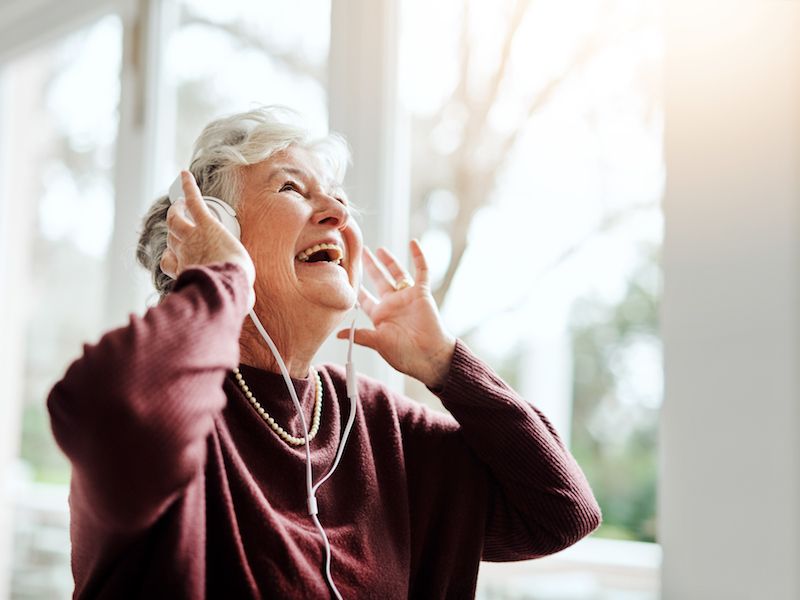
Noise-related hearing loss doesn’t only impact individuals who work in loud surroundings, like construction workers or heavy metal roadies. It doesn’t even need to be work-related, recreation-related noise exposure can be harmful, also. The most prevalent type? Music, gaming, streaming video or anything else that you would listen to through headphones or earbuds.
You may be alarmed to learn that a mobile device can go that loud. The average pain threshold for human hearing is around 150 db which is well within the range of these devices. Your ears will actually start to hurt at this volume. So what’s the answer for protecting your hearing against volume related injury.
The volume level here is essential. A simple shorthand that’s widely suggested is the 60/60 rule: Listen with the volume at or below 60% for no more than 60 minutes in a single session (because how long you listen for matters, too).
Make a Setting on Your Hearing Aids For Music
Be sure, if you’re utilizing hearing aids, you don’t attempt to drown out other sounds by cranking your streaming music up too high. Additionally, ask us about how to best listen to music. If you’re a musician or someone who loves music you might have noticed that most hearing aids are programmed to improve the clarity of voices…not necessarily music. While listening to music, we can most likely make various modifications to help enhance the quality of sound and decrease the feedback.
Picking out Headphones
When shopping for headphones there are lots of choices, particularly if you use hearing aids. There are a few things to think about, even though it’s generally a matter of personal preference.
Headphones That go Over The Ears
Over the ear headphones are becoming popular again but you most likely won’t find the old foam covered ear pieces that once came with a walkman. Often surprisingly high-priced, they feature a large variety of color options and celebrity endorsements, and yes, exceptional sound quality. And these headphones go over the entire ear blocking out noise, unlike those old foam ones.
Conventional perception is that these are less dangerous than in-ear headphones because the source of the sound is further from your eardrum. But the reality is they’re often capable of much louder sound than the smaller kind, the speakers are a lot larger. Also, noise-canceling will probably help you ignore the crying baby on your flight, but in other situations, it can silence sounds you should hear (like a honking car). That said, because they block out outside sound, you can typically decrease the volume of what you’re listening to so it’s not so loud that it will harm your hearing.
Earbuds
The standard earbuds that are included with devices like iPhones are much maligned for their inferior quality of sound, but because they come with your phone lots of people still use them. Specifically, with newer Apple devices, it’s simply easier to use the earbuds which came with the device because it probably won’t have a headphone jack.
Earbuds also don’t cancel out noise so the drawback is, you have a tendency to turn up the volume. Again, though it’s often said that earbuds are problematic because you stick them into your ear so their speakers are very close to your eardrum, volume is really the biggest issue.
Occluding or Isolating Earbuds
More comfortable than regular earbuds, models that have a round rubber tip are the choice of many because they help obstruct outside sound. A seal that blocks outside noise from getting in is formed by the rubber tip which molds to the shape of the ear. Not to sound like a broken record, but these types of earbuds have the same drawbacks as the other two (it’s all about the volume), as well as carrying the same caution as over-the-ear headphones (they can block out warning sounds). Needless to say, these won’t work for you if you wear hearing aids.
You may have to test out quite a few pairs before you find headphones that work for you. Depending on what you’re most often using them for say talking on the phone, versus listening to music, you’ll have unique acoustic requirements. The relevant thing is to find headphones that make it comfortable for you to enjoy at a safe and secure sound level.
Don’t Cut Corners When it Comes to Your Hearing
Is it Safe, How Can I be Sure? If you use a smartphone, you can get an app for that, you can get the National Institute for Occupational Safety and Health’s free Sound Level Meter app. You can get other apps, but studies has discovered that the dependability of these other apps is hit-and-miss (also, for whatever reason, Android-based apps have proven less reliable). That motivated NIOSH to develop an app of their own. You can measure external sounds using the app, but it’s also possible to measure the sound coming from your device’s speakers, so you will find out precisely how much volume your ears are getting. It’s a little bit of effort, but putting in place these kinds of preventative steps can help protect your hearing.
